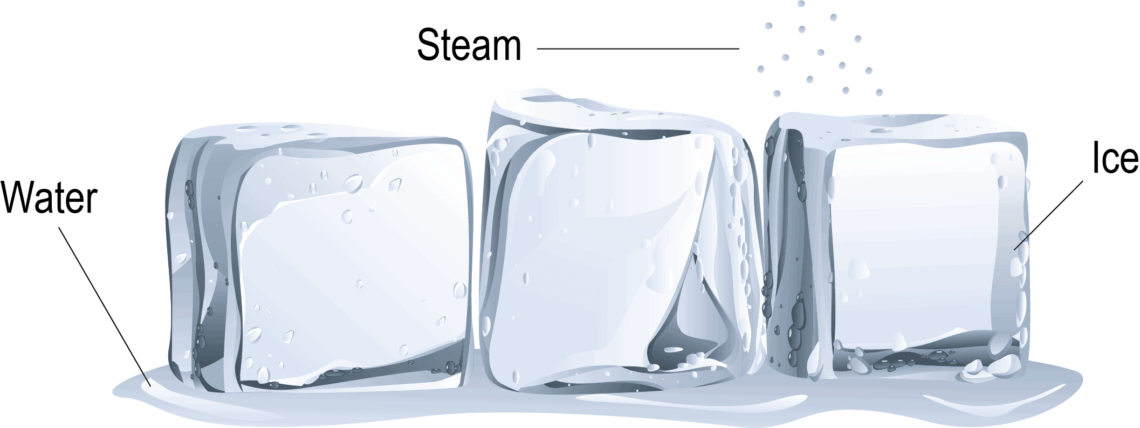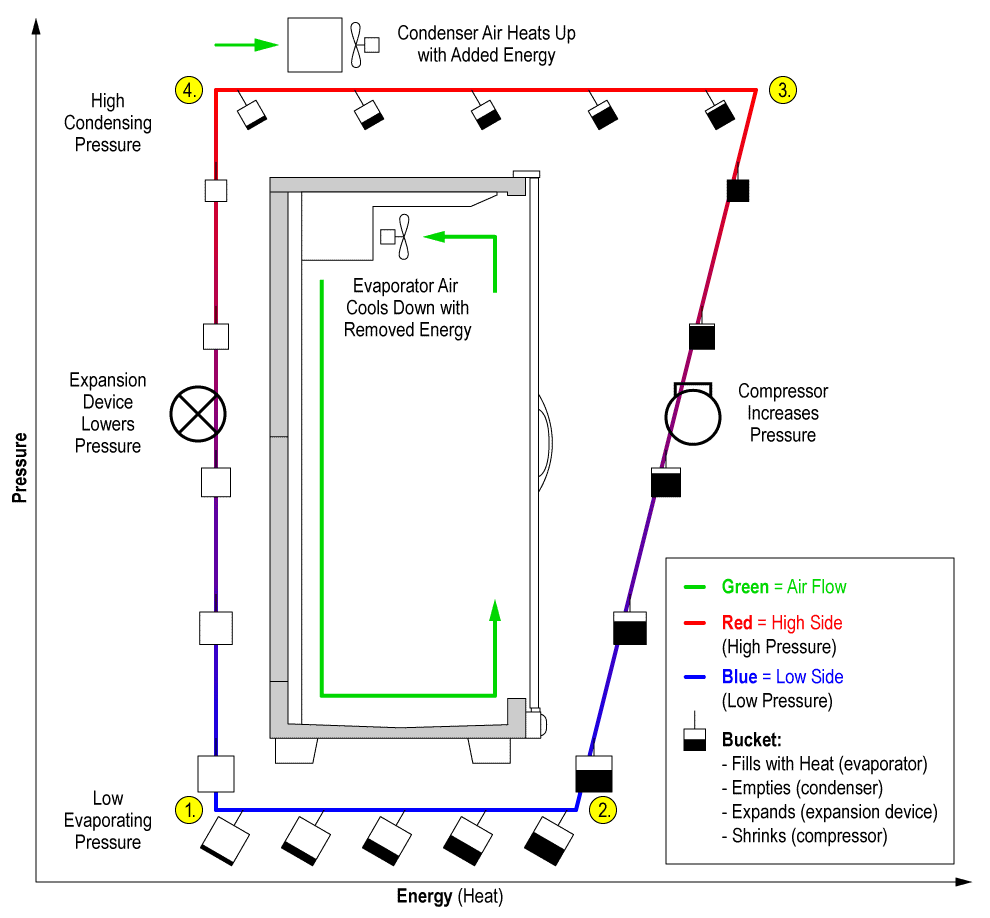We take our home refrigerators for granted. We put food into the refrigerator, and it makes the food cold. But actually, the refrigerator is not making the food cold; it is removing heat from the food. That might sound counterintuitive, so we invite you to open the door to the world of refrigeration by learning about the basics of the refrigeration cycle.
Heat Transfer & Pressure
Before we discuss the refrigeration cycle, we must briefly discuss heat transfer. Heat always transfers from warm to cold. You can see evidence of this in your beverage of choice. Your morning coffee may start hot, but as the day wears on, it gets cooler because heat transfers into the surrounding air. At lunch, your soda warms up as heat transfers from the surrounding air. This is called sensible heat transfer. You can remember this by thinking about how you can sense (feel) the change. The coffee mug feels hot as heat transfers to you; the soda can feels cold as heat transfers from you.
Heat transfer can also cause a substance to change state between solid, liquid, and gas. This is called latent heat transfer. For example, H2O can exist as a solid (ice), a liquid (water), or a gas (steam). At sea level, H2O will be water between 212°F (100°C) and 32°F (0°C). If water is heated beyond 212°F, it will evaporate into steam. If water is cooled below 32°F, it will freeze into ice. As a substance changes state, its original state will be reduced as the other state increases. For example, as ice melts, it disappears and the amount of water increases. If enough heat transfers, the substance will cease to exist in its original state. Latent heat transfer (changing state) takes more heat than sensible heat transfer (changing temperature).
Another factor is how pressure relates to temperature. Boiling points vary depending on the pressure surrounding the substance. At sea level, water boils at 212°F, but if you travel to Denver or Pikes Peak in Colorado, the atmospheric pressure is lower and the boiling point will be lower.
The Refrigeration Cycle
Your unfinished can of soda is now warm. How do you chill it again? You may think the answer is to add cold to it, but remember that heat only moves from warm to cold. It is more accurate to say that you are actually removing the heat from the soda by transferring that heat to another, colder object. This is the concept behind the refrigeration cycle.
The refrigeration cycle comes from the work of William John Macquorn Rankine, who discovered how to transfer heat away from objects that were already cool. Historically, this could be done by placing objects into an ice box. Ice works well as a refrigerant because it maintains a constant 32°F temperature. Warm product (milk, meat, etc.) transfers heat to the ice (latent heat transfer), causing the ice to melt into water. The water (full of heat) drains away, and the refrigerated space and product remain cool.
All modern refrigeration systems have four main components that work together to move heat: the evaporator, the compressor, the condenser, and the expansion device. Imagine that heat moves in a “bucket” and follow the bullet points which correspond to the figure.
- The evaporator gathers/absorbs heat from the refrigerated space into a “bucket.” The “bucket” is low-pressure, and it changes state (latent heat transfer) as it absorbs heat. Then the evaporator moves the low-pressure, heat-filled “bucket” to the compressor.
- The compressor applies pressure, which compresses the heat-filled “bucket.” The heat-filled “bucket” changes from low-pressure to high-pressure as the compressor pushes it from the colder evaporator to the warmer condenser. When pressure is added, the temperature of the “bucket” also increases.
- The condenser takes the high-pressure, heat-filled “bucket” and releases the heat from the “bucket” to the outside air (or other application). The “bucket” changes state (latent heat transfer) again as it releases heat.
- The expansion device relieves the pressure on the empty “bucket.” When pressure is reduced, the temperature also decreases. The “bucket” cools and expands on its way to the evaporator to absorb more heat again.
The downside of using ice as the “bucket” is that more ice must constantly be added as it melts away. Modern refrigeration systems needed a long-term solution. Refrigerants are the modern “bucket” because refrigerants can continually absorb and release energy without escaping the system. Refrigerants change state between a liquid to a gas. Refrigerants must be able to boil at low pressures and low temperatures to be efficient.
High-glide refrigerants have a unique effect on a refrigeration system.
Have questions? Contact us and ask for our Director of Regulatory Compliance & Refrigeration Technology.


